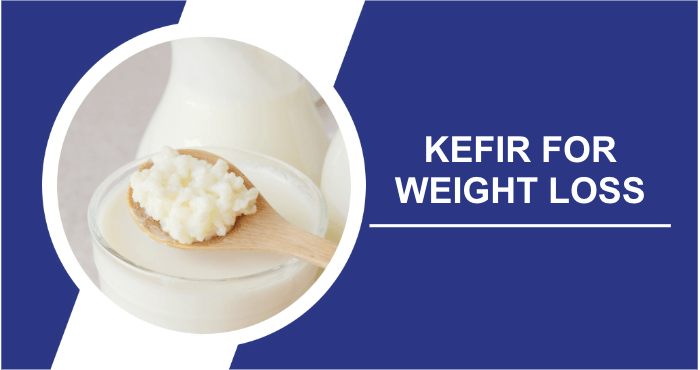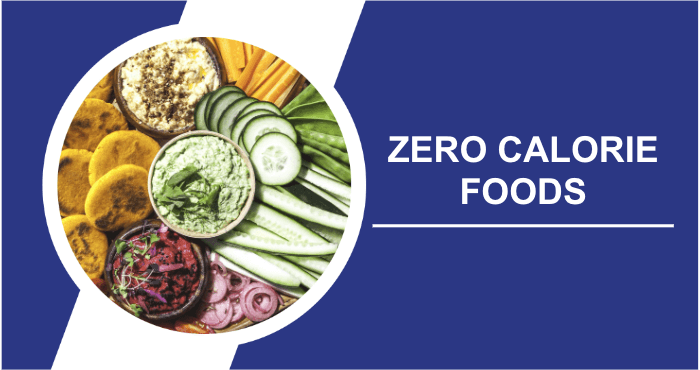In ancient times, using a boat to traverse a body of water was considered a laudable form of physical activity. The act of maneuvering the oars engaged not only the arms, but also the trunk, while strengthening the lower limbs as they were planted on the bottom of the boat for stability.
Today, the opportunity to actually row on the water is limited for many. However, the fitness community, recognizing the myriad benefits associated with this activity, has diligently worked over time to improve the practice of rowing through the invention of the mechanical rowing machine.
Historically, Chabrias, an Athenian admiral in the 4th century BC, introduced the first wooden rowing machines to aid in military training. These devices allowed novice rowers to gain proficiency in technique and timing before embarking on naval expeditions.
The first patented indoor rowing machine was introduced in 1872 and is credited to W.B. Curtis. Its purpose was to make it easier for aquatic athletes to maintain fitness while on land. Subsequent refinements were implemented over the years, culminating in the sophisticated models we encounter today, designed for both commercial and residential use.
Rowing machine training strategy for weight loss There are two primary methodologies for using a rowing machine to achieve weight loss: sustained rowing at a moderate intensity level and an interval-based program that alternates between sustained rowing and short intervals of vigorous rowing.
Both of these training approaches, whether they involve steady, continuous exertion or high-intensity interval training, are effective in reducing body fat and losing weight through the calorie-burning process.
Where can I find rowing machines? Do I need to buy my own?
You can find rowing machines in many places. Local gyms often offer them for members to use. Alternatively, you can buy your own online or at a fitness equipment store. The decision to buy a rowing machine depends on your fitness goals and convenience preferences. Having your own rowing machine offers flexibility, but using a gym’s equipment may be better if you prefer variety in your workouts.
How much does a rower cost?
The cost of a rowing machine can vary widely depending on the brand, features, and quality. Basic models can start at around $200, while more advanced and professional rowers can cost upwards of $1,000. It’s important to consider your budget and specific fitness needs when choosing a rowing machine, as there are a wide range of options to suit different preferences and price points.
Rowing machine for weight loss

In today’s landscape of weight loss options, which includes the widespread use of CBD oil, rowing is emerging as a compelling choice. This is due to the fact that rowing is a comprehensive full-body workout that offers significant potential for weight loss.
The number of calories you can effectively burn while rowing depends on several variables, such as the specific rowing machine you use, the duration of your workout, the intensity of your exercise, and your individual body size.
Is a rowing machine good for weight loss?
Rowers are highly effective for weight loss, primarily because rowing is a full-body, low-impact exercise. Rowing engages nearly twice as much muscle mass as activities such as running or cycling.
Each stroke on a rowing machine simultaneously targets your quadriceps, hamstrings, glutes, core, arms and back muscles, providing a workout that closely approximates a full-body workout. According to the American Fitness Professionals Association, this means that approximately 65 to 75 percent of the effort is in the legs and 25 to 35 percent is in the upper body.
A study conducted by Harvard Medical School found that a person weighing 125 pounds can burn about 210 calories in just 30 minutes of moderate rowing. For someone weighing 155 pounds, this calorie burn increases to 252, while a person weighing 185 pounds can burn about 294 calories in the same amount of time.
Beginner rowing workout
For those new to rowing, it’s a good idea to start with a moderate exercise routine and gradually work your way up to higher intensity levels. Progress in rowing takes time, and some people may find higher intensity levels challenging. Regardless of your pace, rest assured that both approaches will contribute to fat loss and calorie burning.
If you choose a slower routine, be aware that it may take a little more time to reach your goals. Some people prefer interval workouts, which involve a combination of moderate rowing interspersed with short bursts of intense rowing. This type of regimen can accelerate the rate at which you burn calories, making weight loss easier.
Josh Jarrett of Quantify Fitness in Nashville explains the benefits of interval training:
“During intervals, muscles use up a significant amount of their stored sugar, which triggers a process that causes them to quickly replenish their glucose supply from other parts of the body.
This process relies on insulin, and over time the body becomes more responsive to lower levels of insulin. When insulin levels are high, the body’s ability to efficiently burn fat is reduced. By increasing the body’s sensitivity to lower levels of insulin, you can “reignite” the fat-burning mechanisms.”
It’s also worth noting that intense exercise depletes the oxygen available to muscles, forcing them to use fat for energy instead. Interestingly, your body continues to burn calories for hours after you stop exercising as it compensates for the oxygen deficit created during exercise.
How should I eat if I want to lose weight on a rowing machine?
If you want to lose weight while using a rowing machine, it’s important to focus on a balanced and sustainable diet. Include whole foods such as fruits, vegetables, lean proteins, and whole grains in your meals. Watch portion sizes to manage caloric intake. Stay hydrated and avoid sugary drinks.
Snack on healthy options like nuts or yogurt as needed to maintain energy levels. Consistency is key, so aim for regular, smaller meals throughout the day to keep your metabolism active. Consult a nutritionist or dietitian for personalized guidance, as they can help you create a plan tailored to your weight loss goals and rowing routine.
Rowing plan for weight loss
As with any fitness program, maintaining consistency and duration of your workout is essential to achieving optimal results, even when your schedule is hectic. Determining the calories burned per hour during a rowing session can be a somewhat complicated task. Fortunately, modern rowers come with built-in computers that do the math for you.
These calculations take into account factors such as the distance rowed in meters, the energy expenditure in watts, and the duration of your rowing session in seconds. It is advisable to aim for 30 to 50 minutes of rowing, five to six times a week, at a moderate level of intensity. Concept2 offers the following recommendations for an effective weight loss workout:
Plan One
Start with two moderate 10-minute sessions, separated by 2 minutes of easy rowing in between. Aim for a distance of 5000 to 7000 meters.
Plan Two
Choose three moderate 10-minute sessions with 2 minutes of easy rowing in between. Aim for a total distance of 10,000 yards.
Plan Three
Work out for 20-30 minutes or longer, alternating 1 minute of hard rowing with 1 minute of easy rowing.
If you intend to make the rowing machine a consistent part of your long-term weight loss routine, it’s a good idea to maintain a steady moderate intensity (with the damper set between 3 and 6). This approach will allow you to row for an hour or more without excessive fatigue. As long as you keep your heart rate between 50-65% of your target heart rate, you’ll continue to burn calories effectively while targeting fat loss.
How to properly use a rowing machine
Before you begin your workout, it’s important to familiarize yourself with the proper use of the equipment to avoid potential injuries that could have both temporary and permanent effects. The following are guidelines for maintaining good form when using a rowing machine:
Body Position
- Begin by sitting upright with your tailbone firmly against the seat back.
- Secure your feet to the pedals.
- Grip the handlebars firmly.
- Push your legs back until they are fully extended.
- Ride forward with your knees close to your chest.
- Maintain proper posture by keeping your shoulders back and your chest open.
- It’s important to avoid leaning too far forward, as this can lead to upper body strain.
- Conversely, leaning too far back can result in a loss of power during the pulling motion.
Foot Position
- Adjust the straps over your feet for a snug fit.
- Adjust the position of the foot pads by raising or lowering them as needed to allow your forearms to clear your knees without touching them.
What negative side effects can a rowing machine have?
While rowing machines offer many benefits, they can also have some negative side effects if used incorrectly or excessively. A common problem is overuse injuries, such as muscle strains or tendonitis, which can occur if you don’t maintain proper form or increase the intensity too quickly. Prolonged or intense rowing sessions can also cause back or shoulder discomfort.
It’s important to warm up, cool down and stretch to prevent these problems. In addition, if you have any underlying health conditions, consult a health care professional before beginning a rowing program, as overexertion may aggravate certain medical problems. Proper technique and moderation can help minimize these potential negative side effects.
Conclusion
Achieving weight loss goals requires unwavering consistency, unwavering commitment, and diligent effort. Success in this endeavor depends on the fundamental principle of burning more calories than you consume. Therefore, it is imperative to complement your fitness program with careful attention to your caloric intake through the adoption of a balanced and nutritious diet.
By incorporating both exercise and diet into your program, you can maximize your chances of achieving and maintaining a healthy weight. Remember that lasting change comes from a holistic approach that combines physical activity with mindful eating for lasting results.
Frequently asked questions
How can a rowing machine help me with weight loss?
A rowing machine provides a full-body workout that effectively burns calories and targets multiple muscle groups, aiding in weight loss when used consistently.
How often should I use a rowing machine for weight loss?
Aim for at least 3 – 5 sessions per week, with each session lasting 20-30 minutes or more, depending on your fitness level.
Can I lose weight by only using a rowing machine?
While rowing is an excellent exercise, combining it with a balanced diet and overall healthy lifestyle is essential for sustainable weight loss.
Can I solely rely on rowing for weight loss, or should I include other exercises?
While rowing is excellent, incorporating a variety of exercises can prevent plateaus and enhance overall fitness. Diversity in your workouts is key to long-term success.
How soon can I expect to see weight loss results from rowing?
Weight loss results vary, but with consistency, a balanced diet, and adequate effort, you may start noticing changes in a few weeks.
Resources
- Physical Culture Study. (2016). The History of the Indoor Rower. [online] Available at: Read article
- AFPA American Fitness Professionals & Associates (2021). Health, Fitness & Nutrition Certifications and Courses | AFPA. [online] Available at: Read article


















